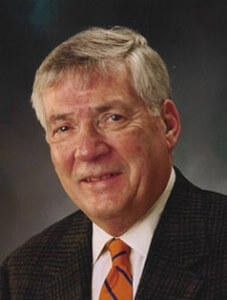Thank you Dr. Needleman
By Emily Monosson | August 15, 2017
With over 80,000 chemicals on the market, we live in an increasingly synthetic chemical world. So it’s easy to forget the handful of toxic naturally occurring chemicals; particularly elemental chemicals like lead. Nestled into the earth’s crust, sequestered away as life took shape, and eventually discovered by ever-innovative humans.
Fascinated by the pliability of the lustrous blue-gray metal as a kid, I used to play with the bands of lead that anchored aquarium plants. It isn’t hard to imagine long-ago ancestors similarly enchanted by such a mutable and useful metal. But lead is also an insidious neurotoxicant.
Enamored with lead’s capacity to coat walls and help provide a smooth ride – twentieth century industrial giants like DuPont, Standard Oil, General Motors and National Lead (founder of Dutch Boy brand paint) infused paint, pipes, and gasoline among other products with it. As our grandparents painted their walls with white lead (a can of paint might contain 70% lead); and our parents toted us about in faux-wood paneled station wagons powered by leaded gasoline, lead became an intimate part of our own chemistry, slipping into our bones, teeth and brains.
By the 1960’s, when I was a kid, the national average for lead in blood rose to somewhere around 600 parts per billion. Today we worry about children with blood lead over 50 parts per billion (or, 5 ug/dL). Over the course of my childhood, I estimate my mother’s Ford wagon added roughly ninety pounds to the environs surrounding our Boston suburban home. Now multiply that, and the numbers for lead released in those days is astonishing. At its peak in 1970, some 250,000 tons of lead in gasoline fueled our beloved automobiles. Given that its toxicity was known since early in the century the insistence on adding lead to gasoline and paint was unconscionable. And we were all complicit, in love with our cars and our suburbs and a fresh coat of paint.

Here in the U.S., the paint industry eventually removed the toxic metal (albeit not without a fight) under a Federal ban in 1978; although elsewhere in the world, the addition of lead to paints has continued, particularly in decorative enamel paints. And even here lead paint in older homes continues to threaten our most vulnerable. The year 1978 also marked the first efforts to limit but not eliminate lead from gasoline. Eventually removed from the roads, surprisingly leaded fuel isn’t completely a thing of the past. In particular lead remained in the “avgas” that propels the small piston-engine planes cruising in and out of airports. According to the FAA there are still some 167,000 aircraft that rely on leaded gasoline exposing those living within 500 meters of an airport to the metal. The EPA has been evaluating the use of lead in this one last holdout to determine if it poses sufficient risk to warrant removal. A final decision is due in 2018. With this current fuel-friendly administration, I wouldn’t bet on a full and final ban.
Even in small amounts lead can lower children’s I.Q.s and alter their behavior. Lead is a toxicant which has no business in our bodies and for which there is no safe dose.
For this knowledge, we all owe a debt of gratitude to Dr. Herb Needleman who first linked lead levels in children’s teeth to adverse impacts on intelligence, attention and eventually, academic success. Needleman revealed the danger of exposures to even very small amounts of lead in the developing brain and the social justice aspects of lead toxicity that continue today. He became a life-long advocate for those whose lives were imposed upon by an industry that valued profits over human health. An industry that pushed back against regulations to remove lead from our lives. His influence was huge. When the EPA finally removed lead from our automobiles Carol Browner remarked:
The elimination of lead from gas is one of the great environmental achievements of all time. Thousands of tons of lead have been removed from the air, and blood levels of lead in our children are down 70 percent. This means that millions of children will be spared the painful consequences of lead poisoning, such as permanent nerve damage, anemia or mental retardation.
Dr. Herbert Needleman passed away last month. He leaves a legacy of minds that are all a bit brighter thanks to his dogged persistence.
Emily Monosson is a toxicologist and author, and holds an adjunct faculty position in the Department of Environmental Conservation at the University of Massachusetts, Amherst.